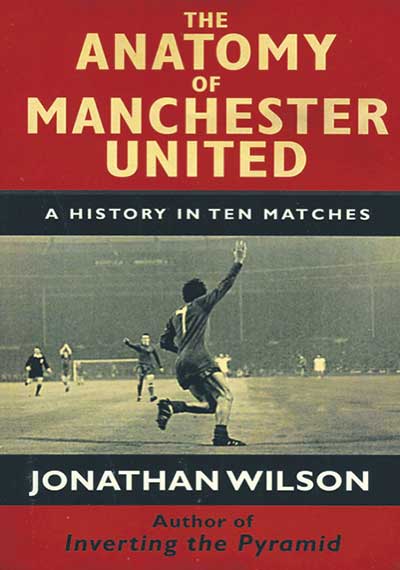
W&N, £18.99
Reviewed by Joyce Woolridge
From WSC 371, January 2018
Buy the book
As might be expected from someone who has previously written a masterly, acclaimed history of football tactics, Jonathan Wilson’s latest book is far more than an analysis of ten matches from Manchester United’s history. Those games – bookended by United’s first ever FA Cup victory in 1909 and their 12th in 2016 which failed to keep Louis van Gaal in his job, serve as the pegs on which a fluent and entertaining history of the club are hung Wilson’s thoughtful introduction includes a fascinating discussion about both the “fallibility of memory” and the role and limitations of match reports when reconstructing what took place. Early match reports can be sparse on detail and anyone who has spent hours squinting at a microfilm reader knows full well how there tends to be an exhaustive description of the first half, while the denouement is tucked away inside the paper in two truncated paragraphs.
The choice of featured games is at times not always the obvious and is all the better for it. Even for a United fan, disaster is more gripping than glory, as in the all too brief excoriation of Frank O’Farrell’s malcontented team losing 5-0 to Crystal Palace in December 1972. The 3-3 draw against Oldham in the 1990 FA Cup semi-final makes the cut rather than the same scoreline final against Palace; Roy Keane’s finest 90 minutes against Juventus in the Stadio delle Alpi rather than April 1999’s final. Victory over Chelsea in Moscow in the 2008 Champions League final is there, rather than being outclassed twice by Barcelona, but that may have been stretching a point.
The best match analysis is not one of the ten, but the introduction’s revisiting of a battling fightback by the author’s own team Sunderland against United, first watched on Match of the Day in November 1984 on TV at Wilson’s gran’s near Roker Park. Not only had he forgotten manager Ron Atkinson’s “Gestapo-style black leather overcoat”, but also how utterly dire United’s defending was, remembering it instead as a display of consummate attacking by Sunderland.
Weaving together the match analyses with the wider history is not without its problems. The book plunges straight into the 1909 game, which does not engage the reader as it should because, unless they know a great deal about United’s early days, the references to “Rocca’s brigade”, Duckworth, Bell and Roberts are names rather than characters. The chapter does later put flesh on the bones, but it would have been better the other way round. The exhaustive kick-by-kick account of the 1968 European Cup final is broken up by chunks of history, which is sometimes difficult to follow.
The history itself, while exceptionally well written and often acutely observed, adds little new. Wilson puts forward the contentious premise in the introduction that from the completion of Old Trafford in 1910 United have had a significant financial advantage which should have resulted in sustained success, rather than their status as English football’s most successful club being based around three specific periods under three separate managers. Several pages could be devoted to a rebuttal, but Wilson himself frequently points out that without a wealthy benefactor or an indulgent city council that stadium needs to be paid for, as well as many other factors which might explain why United’s history has not always been one of non-stop glory beyond the obvious periods of mismanagement. All in all, a more than worthy attempt at covering a mammoth subject, with an interesting twist.